
-
Featured products
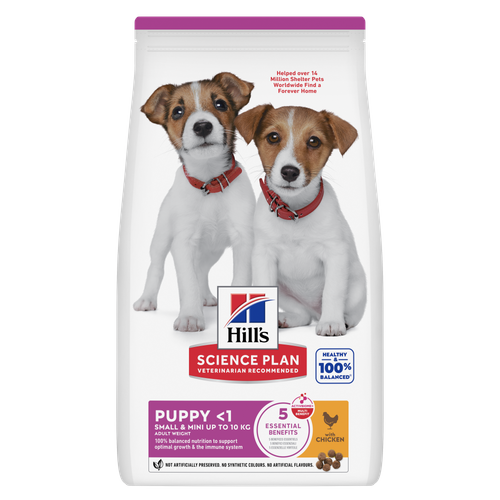 Small & Mini Puppy Dog Food
Small & Mini Puppy Dog FoodHill's Science Plan Puppy Small & Mini Breed Dog Food with Chicken is a complete pet food, specially formulated with ActivBiome+ Multi-Benefit Technology.
100% balanced nutrition to support optimal growth & the immune system.Shop Now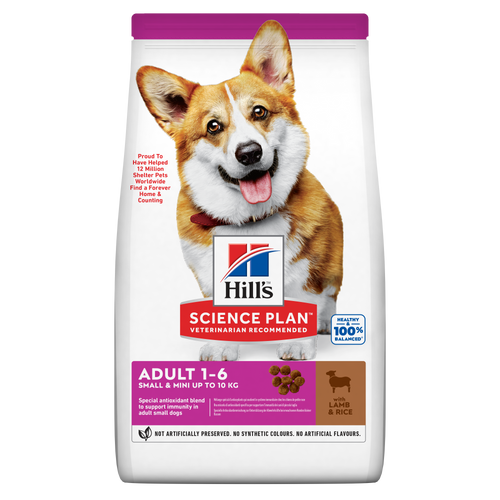 Small & Mini Adult Dog Food
Small & Mini Adult Dog FoodHill's Science Plan Small & Mini Breed Adult Dog Food with Lamb & Rice is a complete pet food, specially formulated with ActivBiome+ Multi-Benefit Technology.
Tailored nutrition for the unique needs of small dogs during the prime of their life.Shop Now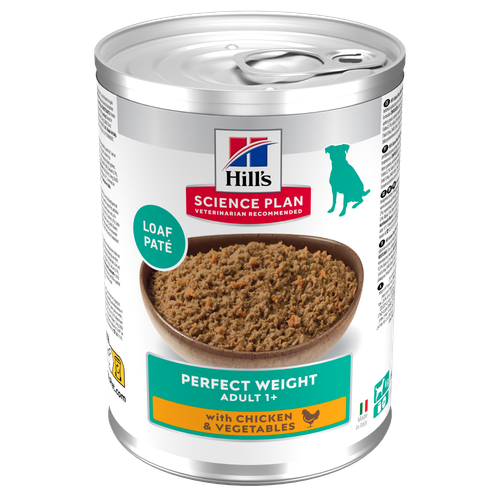 Perfect Weight Adult Dog Food with Chicken & Vegetables
Perfect Weight Adult Dog Food with Chicken & VegetablesHill's Science Plan Perfect Weight Adult Dog Food with Chicken & Vegetables ia a complete premium dog food for dogs prone to weight gain or who are slightly overweight. This savoury tinned loaf is enriched with ingredients that support healthy weight maintenance & long-lasting weight support.
Shop NowFeatured products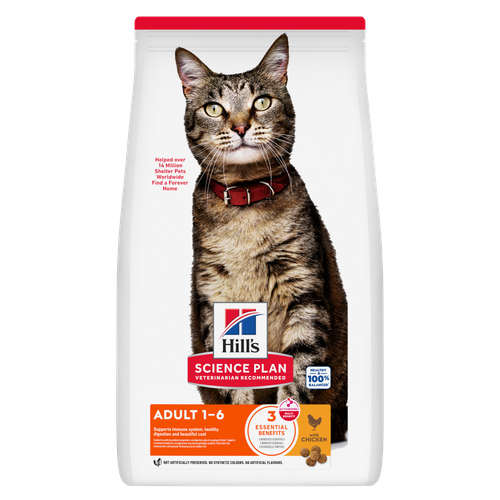 Adult Cat Food
Adult Cat FoodHill's Science Plan Adult Cat Food with Chicken is a complete pet food, specially formulated with ActivBiome+ Multi-Benefit Technology.
This food is specially formulated to fuel the energy needs of cats during the prime of their life.Shop Now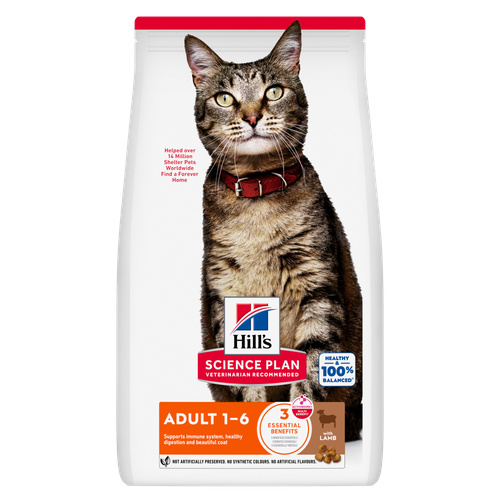 Adult Cat Food
Adult Cat FoodHill's Science Plan Adult Cat Food with Lamb & Rice is a complete pet food, specially formulated with ActivBiome+ Multi-Benefit Technology.
This food is specially formulated to fuel the energy needs of cats during the prime of their life.Shop Now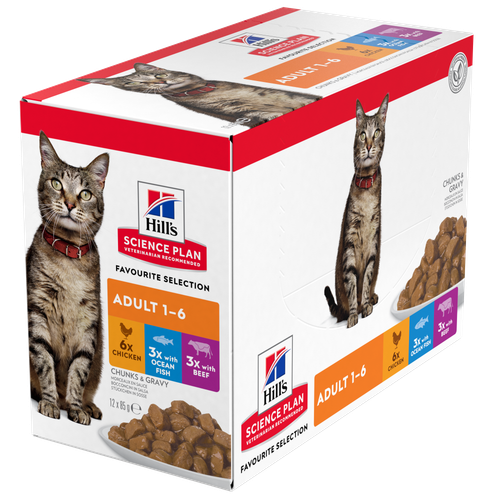 Feline Adult Wet Food
Feline Adult Wet FoodTender chunks in gravy for cats, with high-quality protein to maintain lean muscle. With vitamin E and omega-3s & -6s for healthy skin and balanced minerals to support healthy vital organs.
Shop Now -
Dog
- Dog Tips & Articles
-
Health Category
- Weight
- Food & Environmental Sensitivities
- Urinary
- Digestive
- Joint
- Kidney
-
Life Stage
- Puppy Nutrition
- Adult Nutrition
- Senior Nutrition
Cat- Cat Tips & Articles
-
Health Category
- Weight
- Skin & Food Sensitivities
- Urinary
- Digestive
- Kidney
-
Life Stage
- Kitten Nutrition
- Adult Nutrition
Featured articles Show some love with wet foods: a great choice for pets with health issues
Show some love with wet foods: a great choice for pets with health issuesShow some love with wet foods: a great choice for pets with health issues.
Read More Proteins
ProteinsTo make a protein, amino acids are linked together in a long chain. The chain is then bundled into to a three-dimensional structure, like a tangled ball of yarn.
Read More The Right Diet For Your Pet
The Right Diet For Your PetIn people, the right diet is very important. If you are eating the wrong way for your metabolism, activity level, age and lifestyle you could end up with health issues.
Read More -


Tooth Development
By three to four weeks of age your puppy’s temporary teeth, or milk teeth, will start to come through. They have 28 milk teeth in total. At around 3-4 months the milk teeth will start to come loose and fall out. They will then be replaced by their permanent teeth.
Puppies should lose their milk teeth before their adult teeth emerge. If your puppy’s teeth are still in place when an adult tooth begins to show, you’ll need to get advice from your vet.
The first permanent teeth to come through are usually the two centre teeth on the top jaw, and the last are the big corner or canine teeth in the top and bottom jaw. Most puppies will feel very little discomfort but may salivate more when the permanent teeth come through.
The average dog's mouth has 44 teeth. There are usually 22 on the top and 22 on the bottom. These teeth are divided into 8 upper and 6 lower incisors, 4 canines, 16 premolars, and 4 upper and 6 lower molars.


Tasty Tips
Dental Problems
Because bad teeth are very common in dogs, now's the time to start paying careful attention to them. Check your pet's teeth regularly, at least once a week, and look out for early warning signs; these include:

- Bad breath
- Bleeding gums
- Build-up of tartar and plaque on the teeth
Brushing your dog's teeth every day will go a long way towards preventing dental problems, so it's a good idea to start straight away. Ask your vet to recommend a dog toothpaste (human toothpaste is not suitable) and toothbrush.
How To Brush Your Dogs Teeth
Firstly make sure their lead is secured.
Position yourself and your puppy, so that you can have easy access to your puppy's mouth.
Put some toothpaste on your finger and allow your puppy to lick it off and then start gently massaging it onto their teeth.
Once used to this you can start using a dog toothbrush.
Gently pull back lips and cheeks to gain access to the premolars and molars.
Brush in a circular motion, and be sure to brush where the tooth meets the gumline.
Try and get to the very back teeth, where teeth problems are most likely to develop.
It is important to keep your puppy calm and relaxed by praising throughout.
Although this task may initially seem daunting, it becomes easier with practice and if your puppy gets used to it early in life it will become a simple task for you both.
As well as toothbrushing, there are special foods available that you can use to help keep your puppy’s teeth and gums healthy when they become an adult. Hill’s Science Plan Oral Care is specially formulated with large dry kibbles designed to wipe the teeth clean, helping to keep your pet's teeth free from plaque.


One of our staff authors prepared this article for you
Related products

Hill's Science Plan Small & Mini Breed Adult Dog Food with Lamb & Rice is a complete pet food, specially formulated with ActivBiome+ Multi-Benefit Technology.
Tailored nutrition for the unique needs of small dogs during the prime of their life.

Hill's Science Plan Perfect Weight Adult Dog Food with Chicken & Vegetables ia a complete premium dog food for dogs prone to weight gain or who are slightly overweight. This savoury tinned loaf is enriched with ingredients that support healthy weight maintenance & long-lasting weight support.
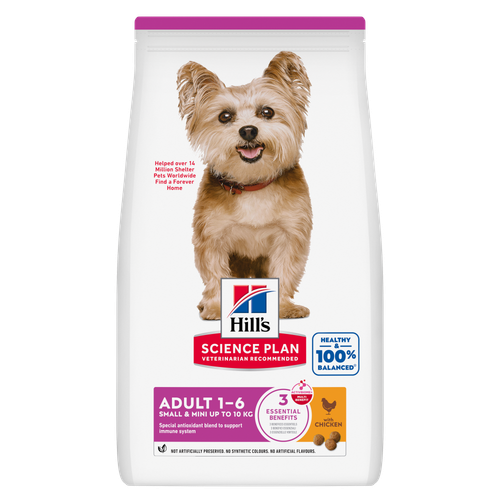
Hill's Science Plan Small & Mini Adult Dog Food with Chicken is a complete pet food, specially formulated with ActivBiome+ Multi-Benefit Technology.
Tailored nutrition for the unique needs of small dogs during the prime of their life.

Hill's Science Plan Puppy Small & Mini Breed Dog Food with Chicken is a complete pet food, specially formulated with ActivBiome+ Multi-Benefit Technology.
100% balanced nutrition to support optimal growth & the immune system.
Related articles

Learn about the warning signs, symptoms, and treatments of pet food allergies and food intolerance in dogs and the affect on your pet.

Dog obesity is a significant problem - learn more about helping your dog become trimmer and healthier through improved nutrition.

Few things can be quite as frustrating to a dog owner as dog fleas.

Like us, it’s essential to keep your dog’s teeth clean and healthy. So we’re giving you our 4 top tips to help you do just that.

Put your dog on a diet without them knowing
Our low calorie formula helps you control your dog's weight. It's packed with high-quality protein for building lean muscles, and made with purposeful ingredients for a flavorful, nutritious meal. Clinically proven antioxidants, Vitamin C+E, help promote a healthy immune system.
Put your dog on a diet without them knowing
Our low calorie formula helps you control your dog's weight. It's packed with high-quality protein for building lean muscles, and made with purposeful ingredients for a flavorful, nutritious meal. Clinically proven antioxidants, Vitamin C+E, help promote a healthy immune system.

